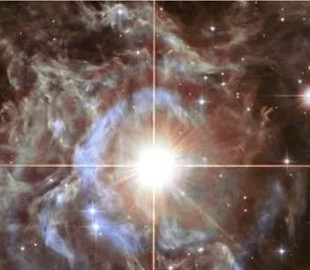
Researchers of the Velocities of Cepheids project believe that clues about the size of our universe may lie in the pulsations of Cepheid stars. This is a type of variable stars that periodically glow brighter and dimmer. Astronomers believe that the rhythm of their glow can be used to measure the distance in space and the rate of expansion of the universe.
So far, scientists have studied hundreds of Cepheids using spectrographic observations collected by the Swiss Euler telescope in Chile and the Flemish Mercator telescope in La Palma In Spain. Astronomers measured the rate at which stars expand and contract along the line of sight of the telescopes.
According to study co-author Giordano Viviani, scientists measured these fluctuations with an accuracy of up to 130 km/h. Currently, experts are studying 18,000 high-precision measurements of the radial velocity of 258 Cepheids. They have already managed to detect unexpected variations in the pulsations of stars, as well as cases where two Cepheids orbit each other. It is believed that the obtained data will become the "anchor" to observe Cepheids from telescopes around the world.
